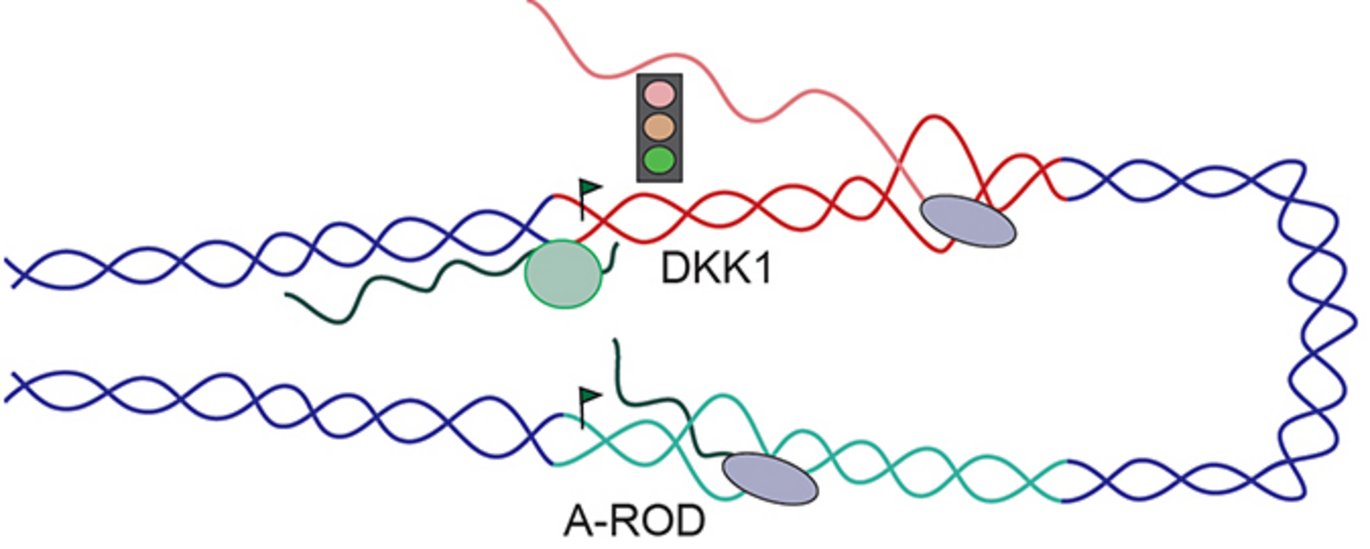A non-coding RNA lasso catches proteins in breast cancer cells
A Danish-German research team has shown that not only the where and when of long non-coding RNA expression is important for their function but also the how. The results can have a big impact on our understanding of dynamic regulation of gene expression in biological processes.

The cells of our body are divided into several compartments with specialized functions. DNA contains our genetic information and is localized in the cell nucleus where gene production is controlled. The nucleus is divided into the soluble nucleoplasm and the insoluble chromatin. Messenger RNA (mRNA) encodes for proteins, and the process of translation occurs in the cytoplasm. On the other hand, long non-coding RNAs primarily work in the nucleus, where they are essential components of controlling gene expression.
The research team has paid particular attention to long non-coding RNAs that can enhance the production of specific mRNAs, and hence proteins, in breast cancer cells. They show that the expression of long non-coding RNAs can result in particularly high expression levels of specific proteins with involvement in cancer.
What is particular novel in the study is that not only where and how much of a particular long non-coding RNA is produces matter, but also how the long non-coding RNA is dynamically distributed within the cell. The authors show that the long non-coding RNA called A-ROD (Activating Regulator Of DKK1 expression) is only functional the moment it is released from chromatin into the nucleoplasm. At this transient phase, it can bring transcription factors – proteins controlling the synthesis of other genes – to specific sites in DNA to enhance gene expression. After its complete release from chromatin, A-ROD is no longer active as an enhancing long non-coding RNA. In a way, A-ROD functions as a lasso that can be thrown from DNA to catch proteins.
The results are exciting both from an experimental and therapeutic point-of-view, as the strategies for targeting RNA expression in the cytoplasm, the nucleoplasm and at chromatin differ widely. The team behind the study believes that these differences can be exploited to optimize the approaches for targeting RNA-dependent processes in disease. A future scientific goal is to identify more of the non-coding RNA lassoes to fully understand their potential and application in regulation of gene expression.
The research has been carried out by researchers from Aarhus University’s Department of Molecular Biology and Genetics and the Max Planck Institute for Molecular Genetics in Berlin. Ulf Andersson Vang Ørom, Associate Professor at Aarhus University, has been in charge of the research team behind the study just published in the prestigious journal Nature Communications.
Long ncRNA A-ROD activates its target gene DKK1 at its release from chromatin. Evgenia Ntini, Annita Louloupi, Julia Liz, Jose Muino, Annalisa Marsico and Ulf Andersson Vang Ørom. doi: 10.1038/s41467-018-04100-3.
For further information, please contact
Associate Professor Ulf Andersson Vang Ørom
Department of Molecular Biology and Genetics,
Aarhus Universite, Denmark
ulf.orom@mbg.au.dk - +45 22288766
